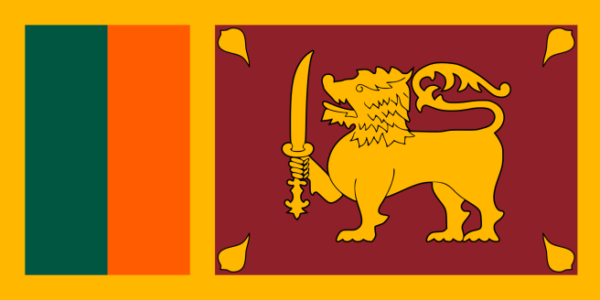BRITISH GOVERNANCE FROM 1815-1832 – By Dr. Tilak S. Fernando

 In 1815, the locals consented to hand over the Governance to the British to govern Ceylon. The social standards maintained during the 16, 17 and 18th centuries were challenged mainly by foreigners such as Solis, Portuguese and the Dutch. Some of the social norms were deep-seated in Sinhala traditions. However, from 1815 to 1918 British exerted much pressure so that Sinhalese could not counterattack or think of quashing it, and emotions died down. When Ceylon was at the peak of being an independent sovereign with the highest culture, the British did a tremendous skilful act in taking over an independent ruler. The question remained unresolved as to why the Sinhalese tolerated and remained quiet. However, collecting various economies and producing history is the central theme in compiling this book (author’s comment). Up to 1832, economic progress in Ceylon was the central theme of this book. Therefore, the author decided to explain various financial situations in this chapter.
In 1815, the locals consented to hand over the Governance to the British to govern Ceylon. The social standards maintained during the 16, 17 and 18th centuries were challenged mainly by foreigners such as Solis, Portuguese and the Dutch. Some of the social norms were deep-seated in Sinhala traditions. However, from 1815 to 1918 British exerted much pressure so that Sinhalese could not counterattack or think of quashing it, and emotions died down. When Ceylon was at the peak of being an independent sovereign with the highest culture, the British did a tremendous skilful act in taking over an independent ruler. The question remained unresolved as to why the Sinhalese tolerated and remained quiet. However, collecting various economies and producing history is the central theme in compiling this book (author’s comment). Up to 1832, economic progress in Ceylon was the central theme of this book. Therefore, the author decided to explain various financial situations in this chapter.
Towards the beginning of the 18th century, the British possessed a substantial part of the East India Company assets. At the same time, the British were engaged in a battlefront to fight against Holland to form an independent nation.
On January 5th, 1782, Sir Edmond Fuse, an admiral, was sent to Ceylon with a platoon (by foot) with American Lord Hector McCarthy Monroe – the Governor of Madras. During this period, the Dutch captured Northern Beachfront, and an English Brigade in Trincomalee captured Trincomalee. By this time, the British, who favoured the Sinhala Government, decided to send an Englishman as an Ambassador with the blessings of Lord McCarthy, to the up-country in Ceylon to have a meeting with the King and come to an agreement
Any way Heugh Boyed returned from Kandy, deeply disappointed having met the king. Meantime, Admiral Ballie de Supfriend took Trincomalee back from the British with a whole load of Naval soldiers. Still, in 1787, Britain, France and Holland signed a Paris Agreement in 1787 so that the French, British, French and Dutch Trincomalee. According to the Paris Agreement, it was possible to access Trincomalee to all parties, such as the British, Dutch and French.
In 1794, with the extraordinary powers of the French government, they managed to expel the Dutch King and formed a self-rule -government. At this junction, King William looted to England. British cunningly sent a message to Dutch administrators (Palaka) that if battles could not be settled, Colombo the British would take over Colombo by force. In no time, the Parliamentarians wanted to avoid contacting King William but sought the self-rule government. Accordingly, in August 1795, with the signatures of two Colonels, Peter Rayner and George Stewart signatures, issued a notice. The notice requested Dutch to remove flags and ‘to get out’ from Colombo Fort forthwith.
Further, the notice said the document should be signed and handed to the British within half an hour. Immediately, the document was signed and handed over to the British. Similarly, the British occupied various regions systematically.
Gradually, the British occupied various sections of the country as follows:
0n 18th September Batticaloa
27th September Point Pedro.
28th September Jaffna.
13thNovembero-Kalpitiya.
On February 16th 1796, the British and the Dutch agreed that as ordinary residents, Dutch officials would stay in Ce for 18 months to pay all debts to an Indian East India Company. Because of the war in Europe, lands acquired by the Dutch company promised to pay all debts in Dutch currency to the Indian Company to avoid blood-shedding. Also, the British company knew that the grounds that the Dutch acquired land had to be handed back. Therefore, the resettlement of the residents was arranged quickly. The company became excited because the provision was not available to execute so speedily. After all, the provincial income needed to be improved.
An East Indian British company, by this time, carried on business in Madras. Therefore, they applied the same action in Ceylon. By this time, the employment of Vidanas was not used in Ceylon. As a result, the British asked all vidanes to resign and employed Madras officials. For both of these actions, Ceylonese did not agree. It resulted in not only the practice of people being sacked who were sincere and faithful. The Ceylonese despised sacking their leaders and, instead, employing Tamil officials. The Eastern British company gradually followed a procedure for the auction of tax. Therefore, the tax became an auction procedure. Those who could pay a higher rate became very successful.
From September 1st, 1796, the British demanded that each coconut tree be paid a new tax, which should be delivered in coins. It was mentioned that coconut trees, which did have a single coconut, even had to pay the appropriate tax.
In April 1800, Governor North introduced an embellishment tax. It was decided to tax all men and women who wear Jewellery. Any person who wears a ring or pendant made out of gold and embedded in Jewellery had to pay this tax, irrespective of sex (a man one Dollar and a woman half a dollar). In 1799, the government received 3,800 gold English sovereigns. Indian Company raised income for three northern beaches, Trincomalee, Batticaloa, and Mullaitivu, as one sector, Jaffna as a separate area, and Chilaw and Matara, including Colombo, as a central area. In these areas, the British made what was known as Kachcheri. In 1797 there was a rebellion against the British, and to investigate the matter, Colonel Mauryan sent the Mauryan Commission to Ceylon.
These were the findings of the Commission:
- Disband the Madras procedure and re-introduce the official method.
- Discontinue (Omladur) Tax Collector from the posts and appoint Vidanes instead.
- To discontinue the new tax system and disband the auctioning of tax procedure.
Afterwards, the following clauses, as mentioned above, were put into practice. Although Mauryan Commission was dispersed, Governor North objected to making any changes. If the official (Rajakari) is completely renounced, Governor North pointed out that the paddy farmer will lose all his lands. He pointed out that it was a way to encourage the paddy farmer, and the production would increase.
There was an overlooked aspect of this. Duty bound part of the workers was constrained. Those people who were employed as farmers did not do any work. Agriculture neglected. Farmers sold their plots of land. People turned to crime due to unemployment. Governor North realised his failure but blamed the Sinhala farmers for being lazy.
Governor Maitland succeeded Governor North. His duty was to increase the living conditions of the locals and feed acquaintance with the people who had managed to be approachable to Governance. His first move was to give back all the farmland to farmers. Secondly, he was aware that the country needed the best civil servants. As a result, he increased their salaries, divided the civil service into three sections and awarded promotions and allocated the provision of intermingling with people and looking for any requirements of the people and reporting back to Governor Maitland regularly. Governor Maitland attempted to eradicate all corruption.
In 1802, the British India Company was taken over by the British. In doing so, the British divided each area and appointed a cashier as a civil servant in each area. Under the civil servants, the British developed what is known as a Korale to account for Korale Patttuwa and Athu-Korale etc. There was a Vidane in charge of every village.
Courtesy: The writer translated into English from Sinhala, the text of the late Prasad Milinda Siriwardena – Ceylon Economic Analysis between BC 543 to 1832. Only the relevant parts were translated.







